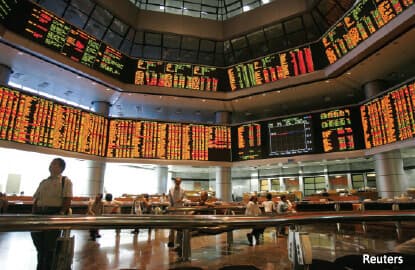
LOGICALLY, the listing status of a Main Market company should be worth more than that of an ACE Market company, as the former is able to attract more a bigger pool of investors mainly because many institutional funds do not have the mandate to invest in ACE Market-listed stocks. In contrast, investments in ACE Market counters are considered riskier due to the lower listing requirements.
While there is no exact market rate for the listing status of a company, most corporate observers estimate that the shell of an ACE Market company could easily be worth about RM5 million to RM10 million, whereas a Main Market company could fetch between RM10 million and RM20 million.
But that is not quite the case nowadays. Some quarters point out that when it comes to a reverse takeover (RTO), the ACE Market could offer a better and easier route for companies with no track record, due to its relatively lower listing requirements compared with the Main Market.
A total of 17 Main Market companies have slipped into Practice Note 17 (PN17) status, whereas only four ACE Market companies have fallen into Guidance Note 3 (GN3) category. The four are Wintoni Group Bhd, Cybertowers Bhd, R&A Telecommunication Group Bhd and Scan Associates Bhd.
As the saying goes, “The rarer a thing is, the more valuable it is.” Considering the higher demand and limited shells available, the listing status of ACE Market companies could turn out to be more valuable than those on the Main Market.
RHB Investment Bank Bhd director and regional head of equity capital markets, Gan Kim Khoon, says the lower listing requirements of the ACE Market have made it more accessible to companies that have no profit track record, as well as companies that are at the early stage of growth.
“Those companies that do not meet the [Main Market] requirements can only look at ACE Market companies as their RTO targets. If there are more such cases, then the value of the listing status [of ACE Market companies] will probably command quite a premium,” he tells The Edge.
In order to meet the minimum profit requirements of the Main Market, a company has to report an uninterrupted profit after tax (PAT) of three to five full financial years, with an aggregate of at least RM20 million, including a PAT of at least RM6 million for the most recent full financial year.
Gan says when a company needs additional funding to meet growth targets, it has to tap the equity market early and fast by undertaking a RTO on the ACE Market first.
“For you to be on the Main Market, you need to have a profit track record, which means you will have to wait for another three to five years. But your business plans may not give you the luxury of time, so you may have to do it immediately,” he says.
Gan points out that some ACE Market companies have started to attract institutional investors, while others qualify to be transferred to the Main Market.
“We do have quite a number of ACE Market companies that are very good, if not better than those listed on the Main Market,” he says.
Etiqa Insurance and Takaful Bhd head of research, Chris Eng Poh Yoon, concurs, saying the listing status of the ACE Market is in demand.
“If you have a company that doesn’t have a profit track record to be listed on the Main Market, you might prefer to go to the ACE Market first, so yes, there can be demand for such companies,” he tells The Edge.
However, Eng says post-listing, a Main Market company is always more valuable because many institutional investors do not buy ACE Market stocks.
“So, there is a discrepancy between the adviser and you on what is actually good for the company,” says Eng.
For the faster route, corporate advisers may tend to advise their clients to opt for candidates on the ACE Market.
“If you need the cash, then you have little choice but to pursue it. But if you don’t really need it, then it might be better to wait because you still have to eventually go through another stage of migrating to the Main Market,” he says.
An executive director of a locally listed company, who only wants to be known as Lim, acknowledges that the listing requirements of ACE Market are not as stringent as those on the Main Market. Hence, ACE Market companies are seeing higher demand for their shells and becoming more valuable as a bigger pool of companies is qualified for listing.
“Yes, there are people who prefer shell companies from the ACE Market, because if you are doing well after a RTO, you can always upgrade to the Main Market later,” he says.
A managing director of an ACE Market turned Main Market company notes that many privately owned property developers are eyeing RTO targets, but he believes that they prefer to be listed on the Main Market.
“If these companies are too small and not qualified for the Main Market, then they might have to consider the ACE Market,” he says.
He adds that since the share capital of ACE Market companies is usually smaller than that of those on the Main Market, they are less liquid. Consequently, share prices tend to swing easily compared with the Main Market counters.
Save by subscribing to us for your print and/or digital copy.
P/S: The Edge is also available on Apple's AppStore and Androids' Google Play.